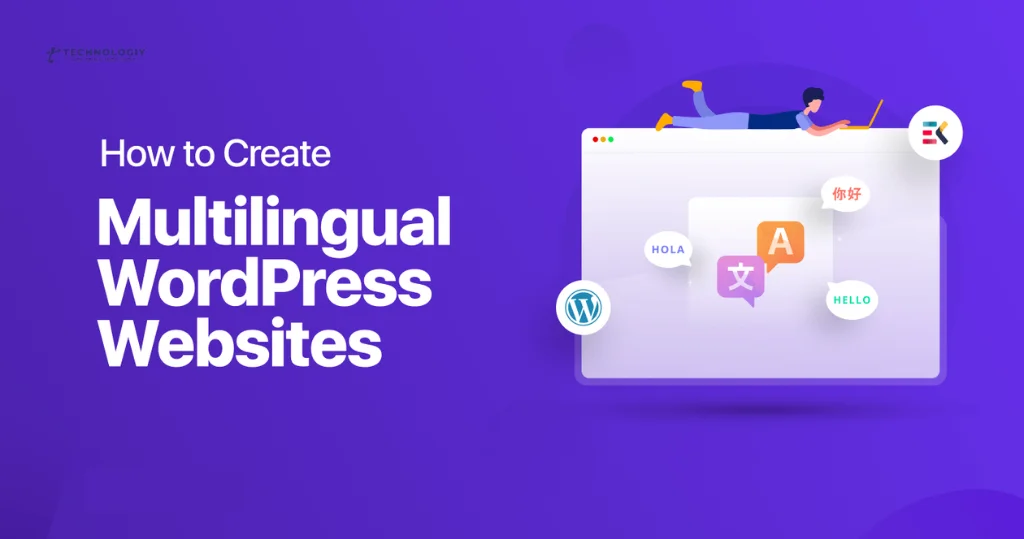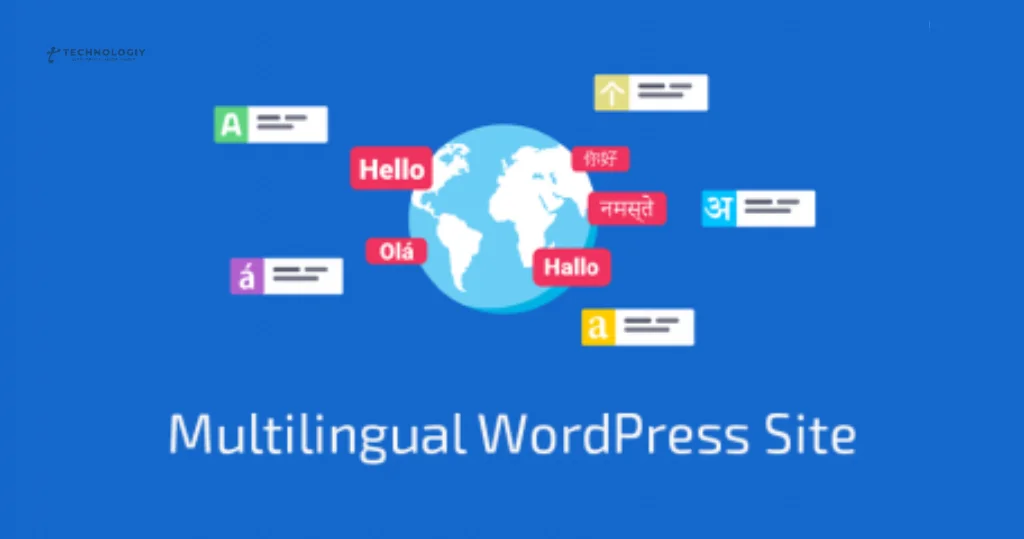Unlock the Power of Multilingual WordPress Pages: A Step-by-Step Guide: In today’s interconnected world, having a multilingual website has become essential. It allows you to reach a wider audience, improve user experience, and ultimately drive more traffic to your WordPress site. With the help of multilingual WordPress pages, you can easily cater to different language speakers and expand your online presence.
If you’re looking to unlock the power of multilingual WordPress pages, you’ve come to the right place. In this step-by-step guide, we will walk you through the process of creating and managing multilingual pages on your WordPress site. So let’s dive in!
Step 1: Choose the Right Multilingual Plugin:
The first step is to select a reliable and user-friendly multilingual plugin for your WordPress site. Numerous options are at your disposal, with some commonly favored selections being WPML, Polylang, and Weglot. These plugins provide seamless integration with your WordPress site and offer a range of features to make managing multilingual content a breeze.
Step 2: Install and Activate the Multilingual Plugin:
Once you’ve chosen a multilingual plugin, you can easily install and activate it on your WordPress site. This process is similar to installing any other plugin. Simply go to your WordPress dashboard, navigate to the “Plugins” section, click on “Add New,” search for your chosen multilingual plugin, and click on the “Install Now” button. After the installation is complete, click on the “Activate” button to activate the plugin.
Step 3: Configure the Multilingual Plugin Settings:
After activating the multilingual plugin, you will need to configure its settings according to your language requirements. This usually involves selecting the languages you want to offer on your site, setting the default language, and choosing language switcher options. Most plugins provide an intuitive interface that allows you to easily manage these settings.
Step 4: Translate Your Pages and Posts:
With the multilingual plugin set up, it’s time to start translating your pages and posts. Depending on the plugin you’ve chosen, you may have different translation methods available, such as manual translation, automatic translation, or a combination of both. Take the time to carefully translate your content to ensure accuracy and maintain the same level of quality across all languages.
Step 5: Implement Language Switcher:
To enhance user experience, it’s important to implement a language switcher on your WordPress site. The language switcher allows visitors to easily switch between different language versions of your website. Most multilingual plugins provide a widget or shortcode that you can add to your site’s header, footer, or sidebar, making it convenient for users to switch languages.
Step 6: Test and Optimize:
Once you’ve set up your multilingual WordPress pages, it’s crucial to test and optimize them. Check for any inconsistencies in translations, ensure that all links and buttons are working correctly, and verify that the language switcher is functioning properly. Additionally, pay attention to your site’s loading speed and overall performance to provide a seamless experience for your multilingual audience.

In conclusion, unlocking the power of multilingual WordPress pages is a game-changer for expanding your online reach and connecting with a global audience. By following this step-by-step guide, you’ll be able to create and manage multilingual pages with ease. So don’t limit your website’s potential – embrace the world of multilingual WordPress pages today!
Remember, a multilingual website opens doors to new opportunities and allows you to effectively communicate with your target audience. So why wait? Start implementing multilingual WordPress pages today and watch your website flourish in the global market.The Power of Multilingual WordPress Pages and take your website to new heights:
Creating Multilingual WordPress Pages for a Multicultural AudienceIn today’s globalized world, having a website that caters to a multicultural audience is essential for reaching a wider demographic. One effective way to achieve this is by creating multilingual WordPress pages. By offering content in multiple languages, you can break down language barriers and ensure that your message is understood by people from diverse backgrounds. In this blog post, we will guide you through the process of creating multilingual WordPress pages, helping you expand your reach and connect with a larger audience.
Why Multilingual WordPress Pages?
Before we dive into the how-tos, let’s discuss the importance of having multilingual WordPress pages. By providing content in different languages, you show your commitment to inclusivity and make your website accessible to a broader range of people. This can result in increased traffic, higher engagement, and improved conversion rates.
Step 1: Choose the Right Translation Plugin:
To create multilingual WordPress pages, you’ll need a translation plugin. There are several options available, but one of the most popular ones is WPML (WordPress Multilingual Plugin). WPML allows you to translate your website’s pages, posts, menus, and even theme and plugin texts effortlessly. It is user-friendly and provides excellent compatibility with other WordPress plugins.
Step 2: Install and Activate the Translation Plugin:
Once you’ve selected a translation plugin, install and activate it on your WordPress website. This can be done by navigating to the “Plugins” section in your WordPress dashboard and clicking on “Add New.” Search for the plugin by name and click “Install” and then “Activate” once it appears.
Step 3: Configure the Translation Plugin:
After activating the translation plugin, you’ll need to configure it to meet your specific requirements. This includes selecting the languages you want to offer on your website and configuring language switchers or flags. Take your time to explore the settings and make any necessary customizations based on your target audience’s preferences.
Step 4: Translate Your WordPress Pages:
Now that your translation plugin is set up, it’s time to start translating your WordPress pages. Depending on the plugin you choose, you can either manually translate each page or use automatic translation services. Ensure that the translated content accurately reflects the original message and maintains the same tone and voice.
Step 5: Implement Language Switchers:
To make it easy for your visitors to switch between languages, it’s essential to implement language switchers. These can be in the form of dropdown menus, flags, or simple text links. Place the switches prominently on your website, allowing users to easily navigate between the different language versions of your pages.
Step 6: Test and Optimize:
After creating your multilingual WordPress pages, it’s crucial to thoroughly test them for any errors or inconsistencies. Check all translations, links, and language switchers to ensure they work seamlessly. Additionally, monitor user feedback and analytics to gain insights into your audience’s preferences and optimize your multilingual pages accordingly.
Creating multilingual WordPress pages is a powerful way to reach a multicultural audience and expand your website’s reach. By following these steps and utilizing a reliable translation plugin, you can effectively break language barriers and connect with a larger audience. Remember to continually update and optimize your multilingual pages based on user feedback and analytics. With a concise tone of voice and a commitment to inclusivity, your website will become a go-to destination for a diverse range of individuals.
Unlocking Global Opportunities:
The Advantages of Multilingual WordPress Pages for Global Content MarketingIntroduction:
In today’s interconnected global landscape, businesses are no longer limited to local markets.” With the rise of the internet, businesses now have the opportunity to tap into global markets and reach a wider audience. However, language barriers can pose a significant challenge in effectively communicating with diverse audiences around the world. This is where Multilingual WordPress Pages come to the rescue! In this article, we will explore the benefits of using Multilingual WordPress Pages for global content marketing and how they can help businesses thrive in the international arena.
Reach a Wider Audience:
One of the biggest advantages of using Multilingual WordPress Pages is the ability to reach a wider audience. By translating your website content into multiple languages, you can engage with individuals from different linguistic backgrounds. This opens up new markets and opportunities for your business to expand its reach and customer base.
Improve User Experience:
When it comes to engaging with a global audience, user experience is paramount. Multilingual WordPress Pages allow you to provide a seamless and personalized experience to users by automatically detecting their language preference and serving content in their preferred language. This not only enhances user satisfaction but also helps build trust and credibility with your international audience.
Boost SEO and Organic Traffic:
Implementing Multilingual WordPress Pages can significantly improve your website’s SEO performance. By translating your content into multiple languages, you can target specific keywords and optimize your website for local search engines. This results in higher organic rankings and increased visibility in international search results, ultimately driving more traffic to your site.
Increase Conversions and Sales:
Tailoring your content to different languages can have a direct impact on your conversion rates and sales. By speaking the language of your target audience, you can effectively communicate your value proposition, address their specific needs, and build stronger connections. This personalized approach can lead to increased engagement, higher conversion rates, and ultimately, a boost in sales.
Enhance Brand Reputation:
A strong brand reputation is essential for success in the international market. Multilingual WordPress Pages allow you to showcase your commitment to diversity and inclusivity by speaking directly to your audience in their native language. This demonstrates respect for cultural differences, builds trust, and positions your brand as a global player in the industry.
Streamline Content Management:
Managing multilingual content can be a complex task. However, with Multilingual WordPress Pages, you can centralize and streamline your content management process. The intuitive interface and user-friendly tools provided by WordPress enable easy translation and management of multilingual content, saving you time and effort in maintaining a global web presence.
In an increasingly globalized world, businesses cannot afford to overlook the power of multilingual communication. Multilingual WordPress Pages offer a multitude of benefits, from expanding your reach and improving user experience to boosting SEO and driving conversions. By embracing multilingualism in your content marketing strategy, you can unlock global opportunities, connect with diverse audiences, and propel your business toward international success.
Don’t let language barriers limit your growth. Invest in Multilingual WordPress Pages today and take your global content marketing strategy to new heights!
